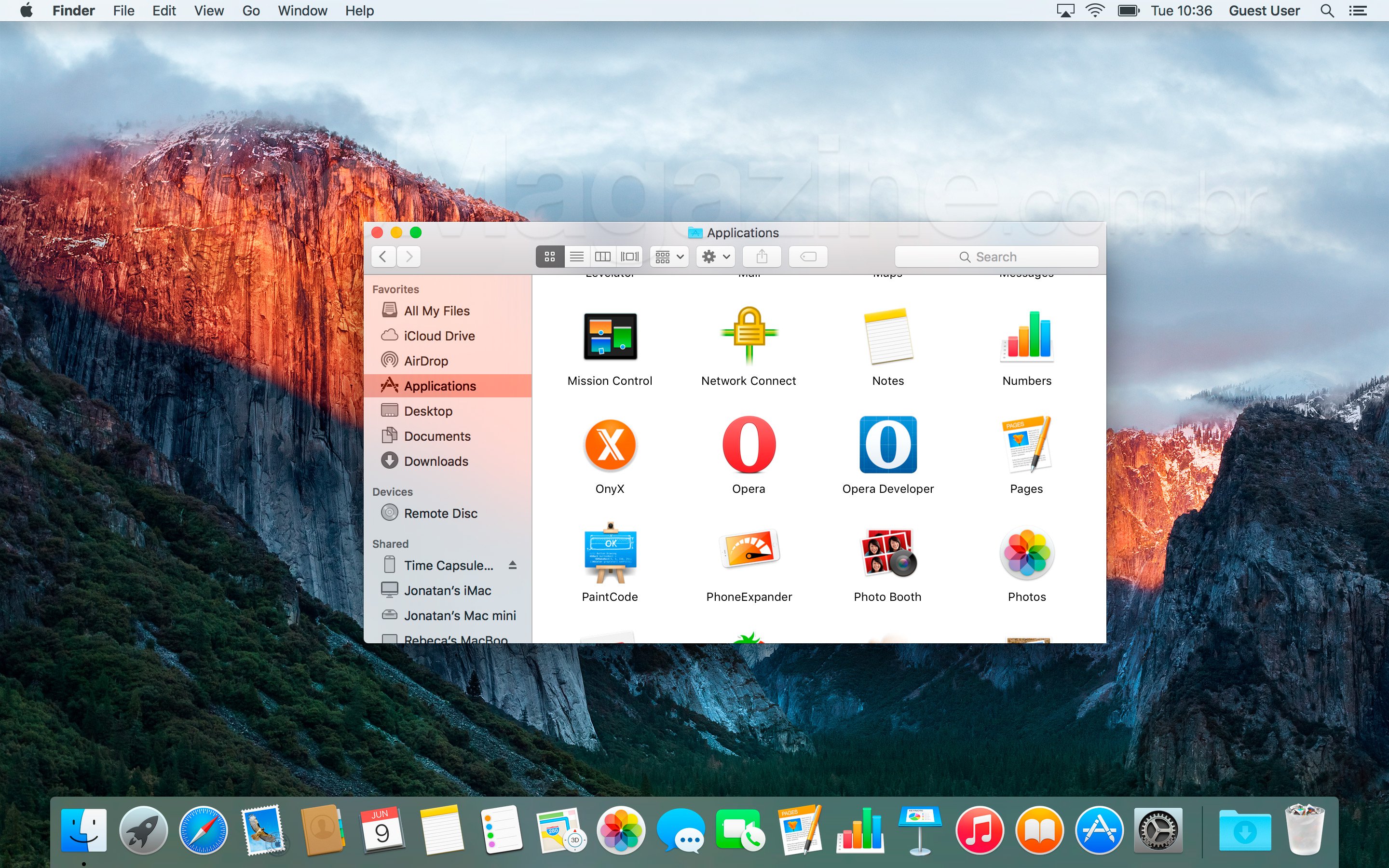As it has been for while, OS X no longer includes MySQL. In this article we take a quick look at how to install MySQL and then how to run the Secure Installation to change the default root password.
- Mysql Download For Mac El Capitan 10
- Mysql Download For Mac El Capitan Download
- El Capitan Os Download Free
- Mysql Download For Mac El Capitan Mac
Download the latest version of MySQL available from the official web site. At time of writing this was 5.7.9 and the description didn’t say it was for 10.11 – but it works fine. Choose the DMG package for easiest installation. You don’t have to sign up to the web site, just click “No thanks, just start my download” beneath the sign up box.
Once downloaded, run the installer. At the end of the installer you will be presented with a dialog of the automatically created root password. Take a note of this.
Open up System Preferences, and select the new MySQL icon.
From here you can start and stop the service, and you can set it to start automatically on startup. Go ahead and start the service.
MySQL is installed in to:
- May 15, 2020 The El Capitan installer is downloaded to the /Applications folder, with the file name Install OS X El Capitan. If you have already installed El Capitan and wish to now create a bootable installer, you can force the Mac App Store to re-download the installer.
- May 06, 2019 We have provided a link to the direct link for Mac OSX 10.11 El Capitan download as well as an El Capitan 10.11 torrent download.No signups, no social share walls, just links to files you enjoy and want. We started this website because we were having trouble finding mac software for lots of the old computers we deal with.
/usr/local/mysql/
Thanks, /Ather How to repeat: Download obdc 5.3.6 dmg file and try to install it on el capitan. 4 May 2016 12:29 Ather Gattami I was trying to install odbc on mac OS X el capitan.
Open up a Terminal window and change to the MySQL folder:
cd /usr/local/mysql/bin/
Run the MySQL Secure Installation and enter the password you were given earlier (please note, that it may first prompt you for your system password):
sudo ./mysql_secure_installation
It will warn you that the root password has expired. This is your opportunity to set your own. Enter it twice.
Follow through the remaining questions answering yes or no, depending on your environment. You can then manage your MySQL databases in your preferred method. I like to use Sequel Pro.
All done!
There are several ways to install MySQL on your Mac, for example:
- compile from source
- use the Homebrew package manager (http://brew.sh)
- use a nifty script courtesy of Mac Mini Vault (http://git.io/eUx7rg)
- or use the dedicated MySQL installer package (recommended)
I recommend the dedicated installer because it’s the only package that will also add a convenient Preference Pane for starting and stopping the service.
In this article I’ll focus on the latter, and I’ll also talk you through how to add MySQL to the PATH variable and how to secure MySQL to keep the evildoers away from your server.
These instructions will work on Yosemite and El Capitan (I’ve tested it on both systems – in fact that’s part of why I’m writing this, so that I can remember for next time).

Downloading and installing MySQL
You’ll find several packages at the MySQL website in the downloads section: http://dev.mysql.com/downloads/mysql/
If that link isn’t working, head over to http://mysql.com and find the Downloads section. Hunt for something called the Community GPL Downloads, and for a section called MySQL Community Server. That’s the Open Source version of MySQL. Pick a platform from the drop down menu (Mac OS X).
Again there are several versions you can download. You’ll probably want the DMG Archive equivalent to the version of OS X you’real running (this screenshot was taken in November 2015, things may have changed since then):
Double-click the file and you’ll be guided through a standard OS X installation. When the installer has finished, MySQL is installed on your system – but of course it’s neither running nor configured yet. We’ll take care of that in the next step.
Take a look under (Apple Logo) – System Preferences and see if you can find the MySQL Preference Pane. If you see that, all is well.
Starting and stopping MySQL
Start MySQL using the preference pane I’ve just mentioned. Tick the box that reads “automatically start MySQL server on startup” if you want that behaviour.
If you ever want to start/stop MySQL, this is the most convenient place to do it on your Mac. At times however, that fancy button is greyed out, which means that the Launch Daemon isn’t running. Should this happen, start the daemon via the command line manually, like this: